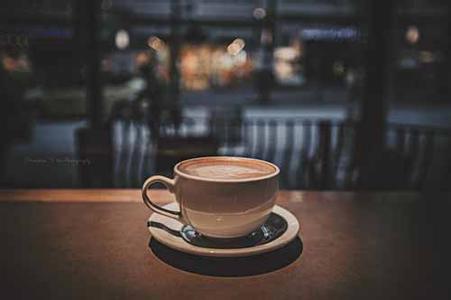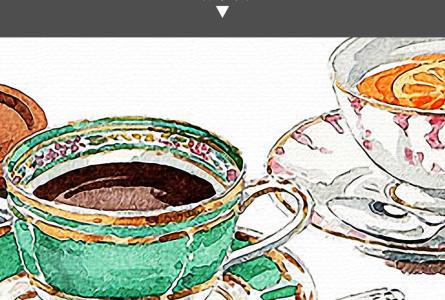Starbucks plans to open 5000 stores in China Media: promoting Coffee Culture to the Middle Class
In an interview at an ice room-style Starbucks store, Wang Jingying explained her thoughts since she became Starbucks' first director of China operations in late October.
"We will definitely create more than 10,000 jobs a year in China in the next five years," she said. We open 500 stores a year, with the goal of 2021. Up to 5000. " Wang Jingying, 44, has been in the top 25 on Fortune China's annual list of China's most influential women entrepreneurs since 2012.
"this is our preliminary plan to develop in China right now, and it is only the beginning," she said.
The report said that this expansion is aimed at turning China into the largest market outside the United States in the next few years. Since China opened its first Starbucks store in 1999, the country's middle class has grown fond of the taste of coffee.
Howard Schultz, chief executive of Starbucks, revealed last week that stores in mainland China are already the most profitable. He expects China to overtake Starbucks'45-year-old domestic market.
It is reported that Starbucks coffee is very common to western city dwellers, but at the price of 30 yuan for a medium latte, it is still a brand that strongly attracts snobbish customers in China-a status symbol for the emerging middle class and a "luxury drink" for ordinary workers.
The US coffee chain was attacked by government media for "inflated prices" in 2013, but poor public relations failed to stop it from expanding or adjusting its pricing strategy.
The number of Starbucks stores in mainland China has tripled to more than 2300 in five years, while fast-food and restaurant chains, including KFC and Pizza Hut, owned by Yum Global, are mediocre.
The company has proved adept at adding local flavors to its stores, such as moon cakes, zongzi, mocha and oolong tea.
Wang Jingying was born in Hong Kong, was educated in Canada and is now based in Shanghai. Starbucks is likely to break into 10 to 15 new markets in China each year, while continuing to infiltrate the megacities where it has a foothold, she said.
"there is enough space to fill in the first-and second-tier cities where we have opened stores, such as Beijing, Shanghai, Guangzhou and Shenzhen," she said.
Coffee consumption in the world's second-largest economy is still much lower than in Europe and the United States, and Euromonitor predicts that retail sales of fresh coffee in China will grow at a compound annual rate of 17 percent, the report said.
However, the competition in China is becoming increasingly fierce. While other international coffee chains such as Ka Shijia are scrambling to grab market share, independent coffee shops have sprung up and have proved attractive to wealthy young Chinese seeking to be "different".
Last month, Starbucks announced plans to promote its high-end "select" brand, the report said.
Wang Jingying will oversee the opening of the first Starbucks coffee roaster and Zhenxuan restaurant in Shanghai in 2017, with a floor area of 30, 000 square feet, twice the size of a Seattle store that opened in 2014.
The bakery is a theater-style Starbucks shop for coffee connoisseurs who are picky about coffee beans and baking techniques.

Important Notice :
前街咖啡 FrontStreet Coffee has moved to new addredd:
FrontStreet Coffee Address: 315,Donghua East Road,GuangZhou
Tel:020 38364473
- Prev

Shangdao Coffee encounters a pinch attack on shareholders, innovative Brands compete with each other for the Market-Shangdao Coffee enters the Brand consumption level
According to the internal staff of Shangdao Coffee, Shangdao Coffee is still managed by eight shareholders divided into eight regions. however, the branches owned by each shareholder are free to set up branches in their respective regions, and these branches are also accepted as headquarters branches, so there are 13 branches. The worker
- Next

Coffee production in Indonesia has fallen by 10% this year.
El Ni ñ o could lead to a 10% drop in coffee production in Indonesia this year, the worst El Ni ñ o in nearly two decades, leading to a dry climate, crop damage and delayed harvesting. A median compiled by Bloomberg based on the estimates of five traders shows that as the world's third-largest grower of robastian coffee, some farmers may
Related
- Why are the coffee in some coffee shops not enough after being frozen? What should I make up for my American latte cappuccino coffee after being frozen?
- How much water does it take to steam coffee by hand? Why is the coffee brewing and steaming time 30 seconds? What is the purpose of steaming coffee?
- The suspected drink contains too much caffeine! Overlord Tea Lady responds urgently!
- Starbucks rejects antique paper coupons?! Netizen: Missed marketing opportunities!
- What ratio of water temperature and ground does the smart cup method use to press coffee? The difference between brewed coffee and filtered coffee?
- What is the standard process for the purpose of coffee cup testing? What is the difference between hand-brewed coffee and cup testing?
- How to use hand-brewed coffee paragon small golden balls? How does cold coffee lock in the aroma of coffee?
- Is American coffee black? What is the difference between American coffee and drip coffee?
- Unexpected! Well-known tea beverage brand Lele Tea will withdraw from the Zhengzhou market!
- Starbucks enters the fashion and beauty industry?! Netizen: Give me an ice American eye cream

